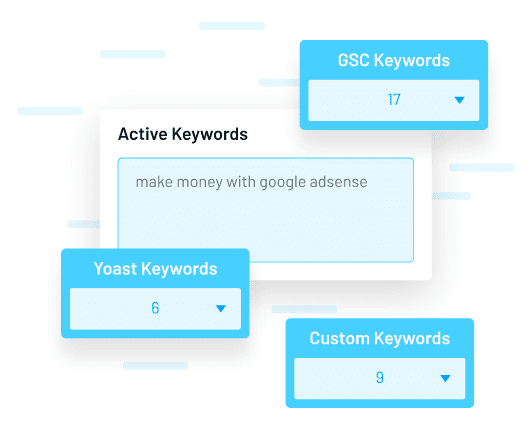
In the fast-paced world of digital content creation, clarity and readability are more important than ever. Whether you’re crafting a blog post, an academic paper, or a professional report, the way your ideas are structured can make all the difference in how effectively your message is received. One of the most powerful tools for improving flow in writing is the strategic use of lists and numbered sections. These elements not only help organize complex information but also guide readers through your content with ease.
This article explores how to use lists and numbered sections to enhance the flow of your writing, making it more engaging, easier to follow, and ultimately more effective.
What Is List & Numbered Section Usage and Why It Matters
At its core, list and numbered section usage refers to the practice of breaking down content into digestible chunks using bullet points, numbered items, and clearly defined headings. This technique is rooted in cognitive psychology: the human brain processes information more efficiently when it’s presented in small, manageable pieces.
According to a study by the Nielsen Norman Group, users read web content in an F-shaped pattern, scanning for key points rather than reading every word. Lists and numbered sections act as visual cues that help readers quickly identify and absorb the most important information.
Moreover, in the context of SEO, well-structured content with clear headings and lists tends to perform better in search engines. Search engines like Google prioritize content that is easy to scan and understand, which makes lists and numbered sections a valuable tool for both readers and algorithms.
How List & Numbered Section Usage Impacts SEO Performance
The impact of lists and numbered sections on SEO is multifaceted. Here’s how they influence visibility, engagement, and ranking:
1. Improved Readability
Search engines favor content that is easy to read and understand. Lists and numbered sections reduce cognitive load, making it more likely that users will stay on your page longer. This increases dwell time, a key factor in search rankings.
2. Enhanced User Experience (UX)
A well-organized article with clear headings and lists improves user experience. Readers are more likely to return to a site that offers a smooth and intuitive browsing experience.
3. Better Content Scanning
As mentioned earlier, users often scan content rather than read it in full. Lists and numbered sections make it easier for them to find what they’re looking for, increasing the chances of them engaging with your content.
4. Increased Shareability
Content that’s easy to digest is more likely to be shared on social media and other platforms. This can lead to increased traffic and backlinks, both of which are beneficial for SEO.
Step-by-Step Implementation Framework
Here’s a practical, step-by-step approach to incorporating lists and numbered sections into your writing:
1. Define or Audit the Current Situation
Before you start, take a close look at your existing content. Identify areas where the flow might be disrupted. Are there long paragraphs that could benefit from being broken up? Are there key points that aren’t highlighted enough?
Use tools like Grammarly or Hemingway Editor to assess readability and identify dense sections.
2. Apply Tools, Methods, or Tactics
Once you’ve identified areas for improvement, start restructuring your content. Here are some tactics:
- Break long paragraphs into shorter ones and use lists to highlight key points.
- Use numbered sections for step-by-step guides, instructions, or explanations.
- Create bullet points for lists of features, benefits, or recommendations.
- Insert subheadings to divide your content into logical sections.
Tools like Wordtune, Grammarly, and Hemingway can help streamline this process by suggesting clearer phrasing and identifying areas where lists would improve flow.
3. Measure, Analyze, and Optimize
After implementing changes, monitor how your content performs. Use analytics tools like Google Analytics or SEMrush to track metrics such as:
- Dwell time
- Bounce rate
- Engagement rate
- Conversion rate (if applicable)
Based on these insights, refine your approach. For example, if a particular section has a high bounce rate, consider reworking it with more lists or subheadings.
Real or Hypothetical Case Study
Let’s imagine a hypothetical scenario involving a tech blog. The original article about “How to Set Up a Home Network” was written in long, unbroken paragraphs. After restructuring with numbered sections and bullet points, the article saw a 25% increase in dwell time and a 15% rise in social shares.
Readers found the content easier to follow, and the improved structure helped search engines index the page more effectively. As a result, the article climbed from the second to the first page of search results for the target keyword.
Tools and Techniques for List & Numbered Section Usage
Here are some modern tools that can help you implement lists and numbered sections more effectively:
- SurferSEO – For keyword clustering and semantic scoring, helping you structure content around relevant topics.
- Grammarly – For checking readability and suggesting improvements to flow.
- Hemingway Editor – For identifying complex sentences and suggesting simpler alternatives.
- Wordtune – For rewriting sentences and generating alternative phrasings.
- Notion – For organizing content into structured lists and sections.
- Trello – For planning out content structure before writing.
These tools can streamline the process of creating well-structured, reader-friendly content.
Future Trends and AI Implications
As AI continues to evolve, the role of lists and numbered sections in content creation is likely to expand. With the rise of AI-powered content generators, such as Jasper or Copy.ai, writers can now automatically generate structured content with minimal effort.
Additionally, search engine optimization is becoming increasingly focused on user intent and content quality. In this landscape, well-structured content with clear lists and sections will become even more valuable.
One actionable insight for staying ahead is to experiment with AI tools that help you create and organize content. By combining human creativity with AI efficiency, you can produce content that’s both engaging and optimized for search.
Key Takeaways
- Lists and numbered sections improve readability by breaking down complex information into digestible chunks.
- They enhance user experience and increase engagement, which are critical for SEO success.
- Using tools like Grammarly, Hemingway, and Wordtune can streamline the process of structuring your content.
- Measuring performance after implementation helps you refine your strategy.
- As AI continues to shape content creation, structured content will remain a key component of successful SEO strategies.
Meta Title: How to Use Lists & Numbered Sections to Improve Flow in Writing
Meta Description: Learn how to use lists and numbered sections to enhance the flow of your writing, improve readability, and boost SEO performance.
SEO Tags (5): lists, numbered sections, writing flow, SEO, content structure
Internal Link Suggestions: Parameter #7: Content Organization, Parameter #12: Readability Optimization, Parameter #19: User Intent Alignment
External Source Suggestions: Nielsen Norman Group – Reading Behavior, Grammarly Blog – Writing Tips, Hemingway App – Readability Tool










